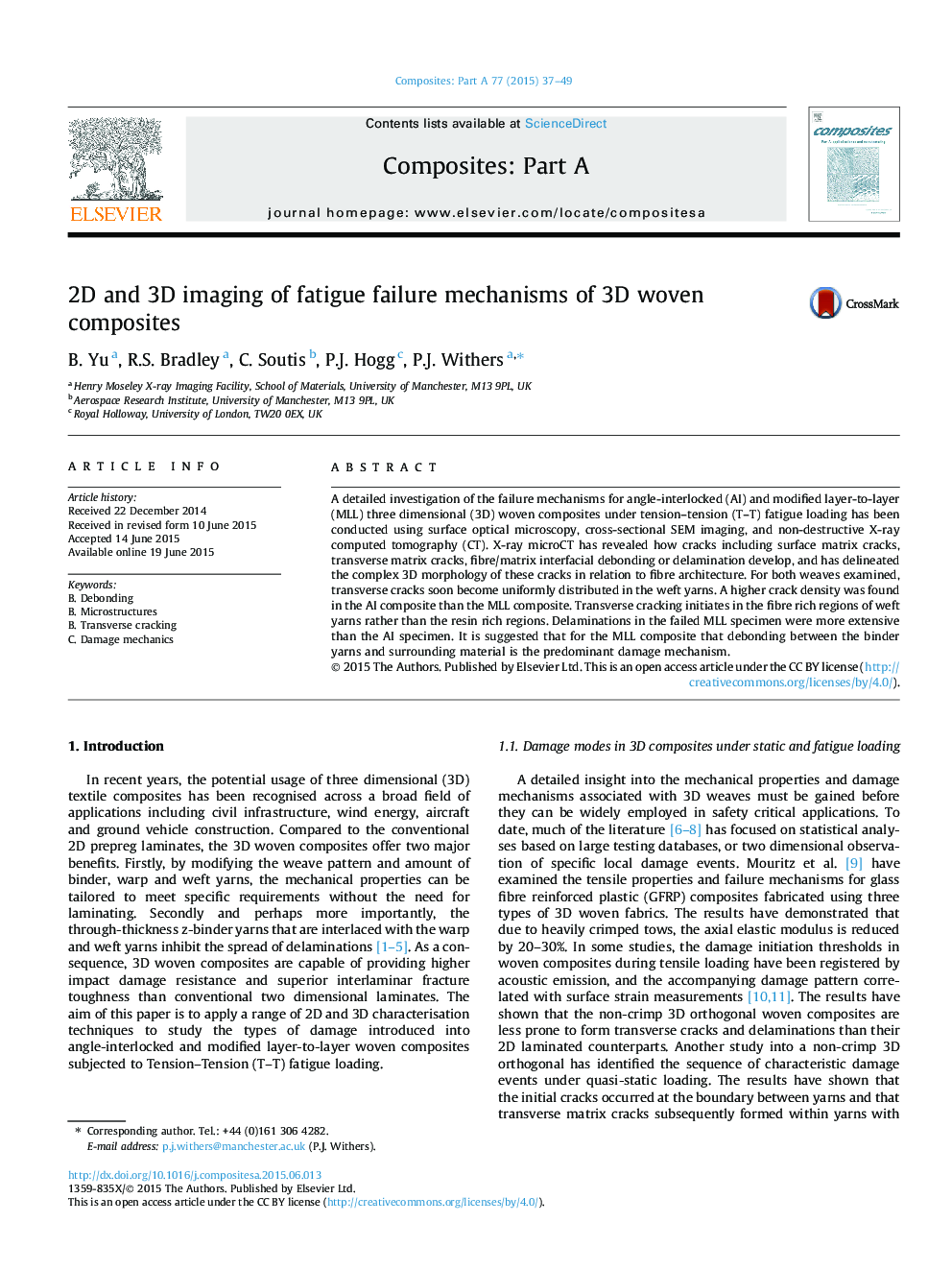| Article ID | Journal | Published Year | Pages | File Type |
|---|---|---|---|---|
| 7891379 | Composites Part A: Applied Science and Manufacturing | 2015 | 13 Pages |
Abstract
A detailed investigation of the failure mechanisms for angle-interlocked (AI) and modified layer-to-layer (MLL) three dimensional (3D) woven composites under tension-tension (T-T) fatigue loading has been conducted using surface optical microscopy, cross-sectional SEM imaging, and non-destructive X-ray computed tomography (CT). X-ray microCT has revealed how cracks including surface matrix cracks, transverse matrix cracks, fibre/matrix interfacial debonding or delamination develop, and has delineated the complex 3D morphology of these cracks in relation to fibre architecture. For both weaves examined, transverse cracks soon become uniformly distributed in the weft yarns. A higher crack density was found in the AI composite than the MLL composite. Transverse cracking initiates in the fibre rich regions of weft yarns rather than the resin rich regions. Delaminations in the failed MLL specimen were more extensive than the AI specimen. It is suggested that for the MLL composite that debonding between the binder yarns and surrounding material is the predominant damage mechanism.
Related Topics
Physical Sciences and Engineering
Materials Science
Ceramics and Composites
Authors
B. Yu, R.S. Bradley, C. Soutis, P.J. Hogg, P.J. Withers,
